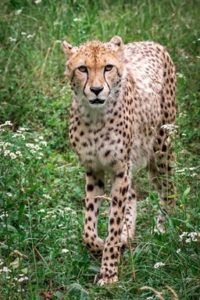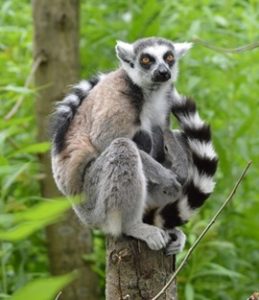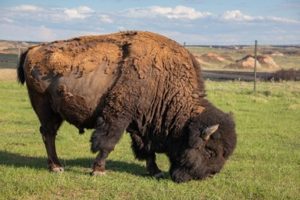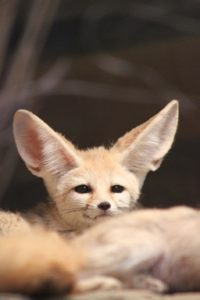Introduction To Placental Mammals

Placental mammals, also simply known as placentals, represent a remarkable group of animals and unlike their marsupial cousins, placental mammals give birth to relatively developed young, thanks to a unique organ called the placenta. This vital structure nourishes the fetus throughout its development, allowing for a longer gestation period. From the majestic Blue Whale(Balaenoptera musculus) to the humble house cat, placental mammals encompass a diverse range of species, each with its own unique story.
Understanding placental mammals is not just about appreciating their biological traits; it also offers insights into ecological relationships and the interconnectedness of life. These mammals have evolved to occupy various ecological niches, playing crucial roles in their respective environments. For instance, large herbivores like elephants help maintain grasslands, while predators such as wolves regulate prey populations. By studying these interactions, we can gain a deeper understanding of biodiversity and the importance of conservation efforts.
Placental mammals are classified into several orders, each exhibiting unique adaptations and characteristics. Some of the most notable orders include Primates, Carnivora, Artiodactyla, and Chiroptera. Each of these orders have special traits that allow them to thrive in their specific environments.

Primates: This order includes humans, apes, monkeys, and lemurs. Primates are characterized by their highly developed brains, flexible limbs, and the ability to grasp objects. Their social structures vary widely, with some species living in large groups while others are more solitary.
Carnivora: Members of this order are primarily meat-eaters and include animals such as lions, tigers, bears, and domestic cats. Their adaptations for hunting and scavenging, including sharp teeth and keen senses, make them efficient predators.
Artiodactyla: Also known as even-toed ungulates, this order includes animals like deer, and pigs. They are characterized by their unique limb structure and are often herbivores that play vital roles in their ecosystems.
Chiroptera: This order consists of bats, the only mammals capable of sustained flight. Bats are crucial for pollination and insect control, making them important for many ecosystems.

The Role Of The Placenta
The placenta is a remarkable organ that allows for the exchange of nutrients, gases, and waste products between the mother and the developing fetus. It serves several essential functions:
Nutrient Transfer: The placenta facilitates the transfer of vital nutrients from the mother to the fetus, ensuring that the young receive the necessary building blocks for growth and development.
Gas Exchange: Oxygen from the mother’s bloodstream is transferred to the fetus while carbon dioxide produced by the fetus is expelled back into the mother’s circulation.
Waste Removal: The placenta also aids in the removal of metabolic waste products generated by the developing fetus, preventing harmful buildup.
Hormonal Regulation: The placenta produces hormones that help maintain pregnancy and prepare the mother’s body for childbirth.
The development and complexity of the placenta have allowed placental mammals to give birth to more developed young compared to marsupials, which typically give birth to underdeveloped offspring that continue their development in the mother’s pouch.

Diversity And Adaptation Of Placental Mammals
The diversity of placental mammals is astounding. This diversity is a testament to their ability to adapt to different environments and ecological niches. Here are some examples of the various unique traits shown by various species of placental mammals:
Aquatic Adaptations: Marine mammals like dolphins and whales have streamlined bodies, flippers, and a layer of blubber for insulation in cold waters. These adaptations allow them to be efficient swimmers and maintain body heat in their aquatic environments.
Arboreal Adaptations: Tree-dwelling placental mammals such as sloths have developed strong limbs that enable them to navigate the treetops. Their adaptations allow them to avoid predators and access food sources like fruits and leaves. Many of the new world monkeys have prehensile tails that allow them to hang from tree branches.
Desert Adaptations: Placental mammals like the Fennec Fox(Vulpes zerda) and kangaroo rats can survive in arid environments.
Grassland Adaptations: Grazing mammals such as zebras and antelopes have digestive systems that allow them to efficiently process tough grasses. Their social structures often involve herding behavior, which provides safety in numbers against predators.
Ecological Roles Of Placental Mammals
Placental mammals play crucial roles in their ecosystems, contributing to the balance of nature. Their interactions with other species highlight the interconnectedness of life. Here are some examples:
Herbivores: Large herbivores like elephants and Bison(Bison bison) help shape their environments by grazing on vegetation. They create open spaces in forests and grasslands, promoting biodiversity by allowing various plant species to thrive.
Predators: Carnivorous placental mammals, such as wolves and big cats, regulate prey populations. By keeping herbivore numbers in check, they help maintain a balance in ecosystems and prevent overgrazing.
Pollinators: Some placental mammals, like bats, play a vital role in pollinating plants. They transfer pollen as they feed on nectar, facilitating plant reproduction and contributing to the health of ecosystems.
Seed Dispersers: Many placental mammals, such as monkeys and rodents, help disperse seeds through their feeding habits. By moving seeds away from parent plants, they promote genetic diversity and the growth of new plants.
Conclusion: Celebrating the Diversity Of Placental Mammals
As we celebrate the incredible diversity of placental mammals, let us also acknowledge the vital roles they play in our ecosystems. By understanding their adaptations and ecological significance, we can become better stewards of the environment and work towards a future where these remarkable animals continue to thrive. Together, we can ensure that the fascinating world of placental mammals remains a vibrant part of our planet’s biodiversity for generations to come.
